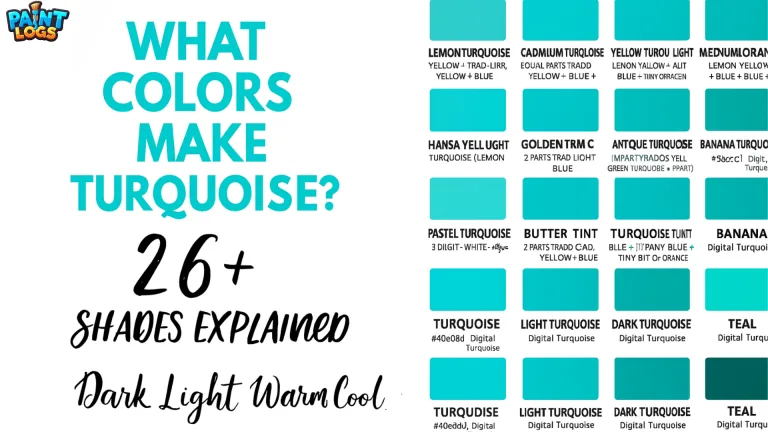Quick Answer
Primary colors are the base hues you can’t mix from others. They differ by system:
- RYB (paint): Red Yellow Blue
- RGB (screens): Red Green Blue
- CMYK (print): Cyan Magenta Yellow Black (K)
Summary: RYB is used for painting, RGB for digital displays, and CMYK for printing.
Primary colors are often called the building blocks of color theory. They sit at the foundation of every color wheel and every mixing system. Whether you’re working with paint, light, or ink, primaries are what allow you to create secondary and tertiary colors.
The important thing to remember is that not all systems use the same primaries:
- RYB is the classic model for artists and painters.
- RGB is used in digital design, screens, and photography.
- CMYK is the standard for printing and packaging.
Understanding the differences between these models helps you avoid mistakes like mixing paint expecting digital results, or designing a logo that looks great on screen but prints poorly.
RYB Primary Colors (Traditional Painting Model)
In the RYB model (Red, Yellow, Blue), the primaries are:
- Red – a warm, powerful hue.
- Yellow – bright, cheerful, and energetic.
- Blue – calm, cool, and stable.
This model has been used for centuries in art and education. It’s the simplest way to introduce color to children and beginners because it’s intuitive and easy to see in real paints.
By mixing these primaries, you get the three secondary colors:
- Red + Yellow = Orange
- Yellow + Blue = Green
- Red + Blue = Purple
From there, you can create tertiaries, shades, and tints — making RYB a practical system for artists.
RGB Primary Colors (Digital Screens)
The RGB model is used for light-based media such as TV screens, smartphones, and digital cameras. Its primaries are:
- Red
- Green
- Blue
This system is additive. That means when you add more light, the colors become brighter. For example:
- Red + Green = Yellow
- Green + Blue = Cyan
- Blue + Red = Magenta
- All three combined = White light
👉 The RGB model is essential for anyone working in web design, digital art, or photography. What you see on a screen is created entirely through combinations of these three primaries.
CMYK Primary Colors (Printing & Inks)
The CMYK model is used in printing. Its primaries are:
- Cyan
- Magenta
- Yellow
- With Black (K) added for depth and shadows.
CMYK is a subtractive model. Instead of adding light, you’re layering inks, which absorb (subtract) certain wavelengths of light and reflect others.
Examples:
- Cyan + Yellow = Green
- Magenta + Yellow = Red
- Cyan + Magenta = Blue
- All combined = a dark, muddy tone (deep black with K ink added for accuracy).
👉 If you’ve ever printed a photo and noticed it looked different than on your screen, this is why — RGB and CMYK are two different systems.
Related: Primary, Secondary & Tertiary Colors: The Complete Guide – a full overview of the color hierarchy.
Why Primary Colors Matter
Primary colors aren’t just a classroom concept — they’re practical tools for artists, designers, and printers.
- For painters and illustrators: Knowing primaries helps you mix colors cleanly without wasting paint.
- For digital designers: RGB primaries control how every pixel glows on a screen.
- For printers: CMYK primaries make it possible to reproduce accurate images in books, posters, and packaging.
- For educators: Teaching primaries gives students the foundation to explore color confidently.
👉 In every system, primaries are the starting point for all other colors. Mastering them means mastering the entire color wheel.
Simple Activity: See Primary Colors in Action
You can try this quick exercise to understand primaries better:
- Place three spots of paint: red, yellow, and blue.
- Mix them in pairs to create the secondary colors: orange, green, and purple.
- Notice how each mix sits between its parent primaries on the color wheel.
- If possible, compare the results to what you see on a screen in RGB. For example, on a digital tool, red + green gives yellow, which looks different than in paint.
This hands-on activity shows the difference between subtractive mixing (paint and pigment) and additive mixing (light on screens).
Conclusion
Primary colors are the foundation of every color model.
- In the RYB model used in painting, the primaries are red, yellow, and blue.
- In RGB for digital screens, the primaries are red, green, and blue.
- In CMYK for printing, the primaries are cyan, magenta, and yellow, with black added for depth.
By understanding which primaries apply to your medium, you can mix colors more effectively, design with accuracy, and avoid unexpected results when moving between digital and print.
FAQs
What are the 3 primary colors in art?
In the RYB model, the primaries are red, yellow, and blue. These are the base hues used for painting and traditional color mixing.
What are the RGB primary colors?
The RGB primaries are red, green, and blue. This model is used for digital screens, cameras, and light-based media.
What are the CMYK primary colors?
In printing, the primaries are cyan, magenta, and yellow, with black (K) added for depth and detail.
Why do different models have different primaries?
Different mediums use different systems. Paint mixes through subtractive color (RYB/CMYK), while screens mix light through additive color (RGB).
Can you mix primary colors from other colors?
No. Primary colors are unique because they cannot be created by mixing other hues. They are the starting point for all other colors.







